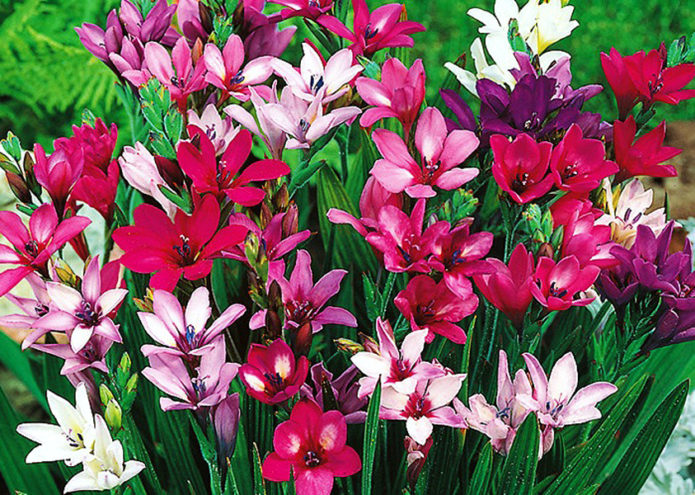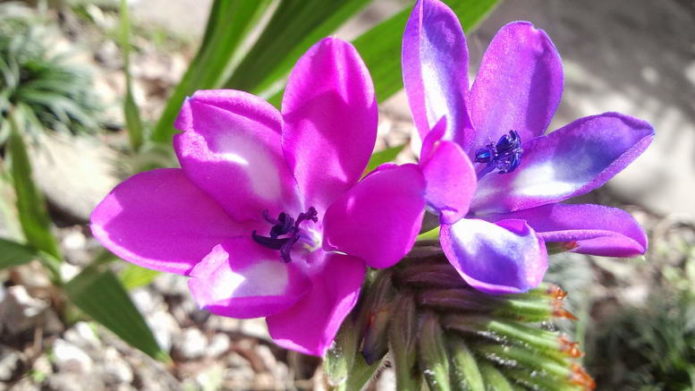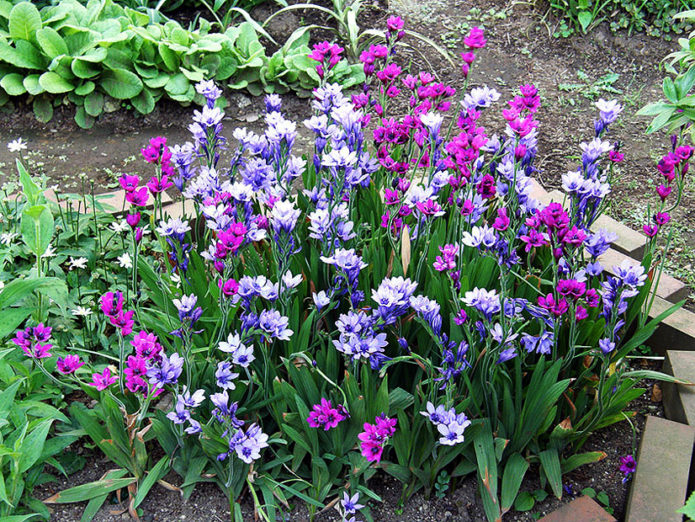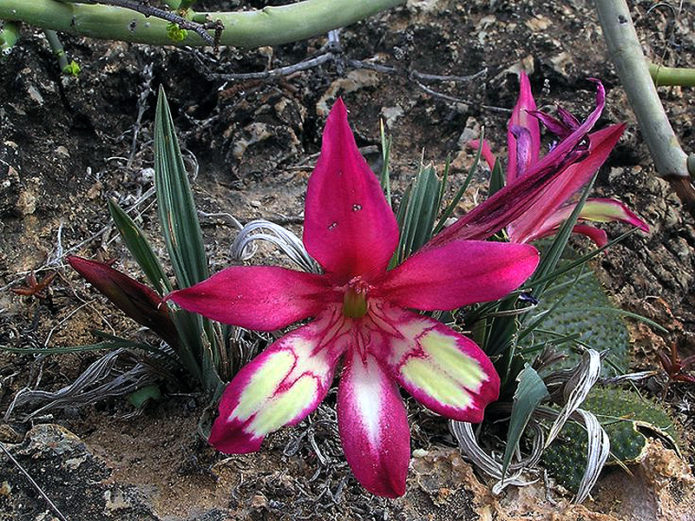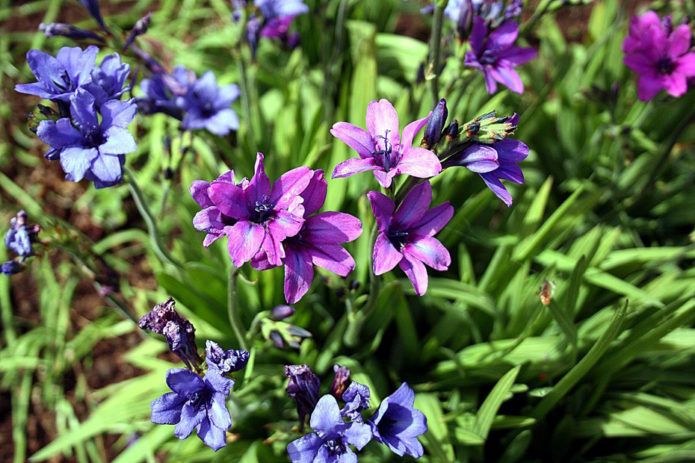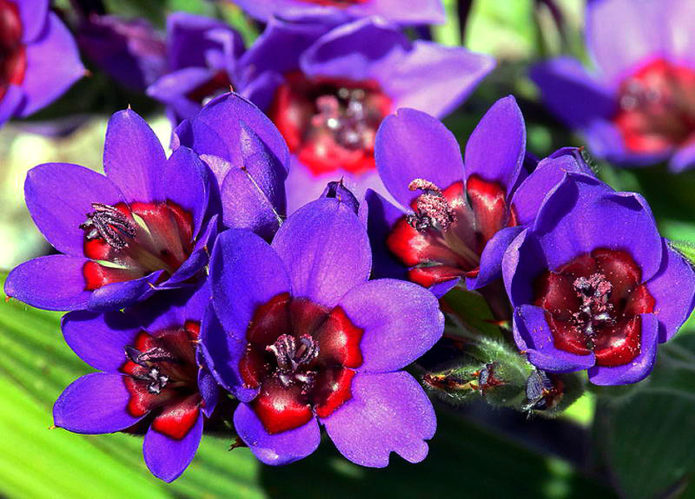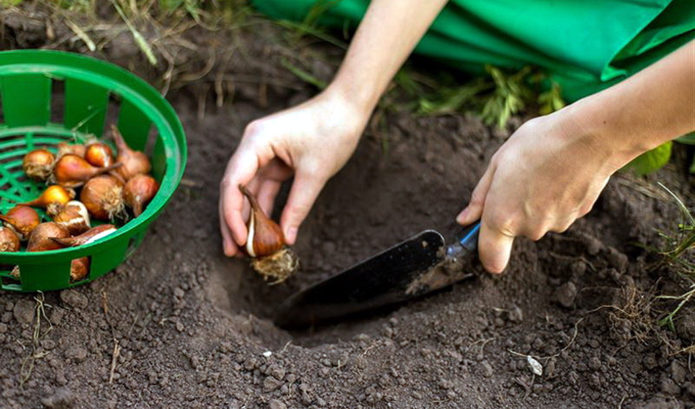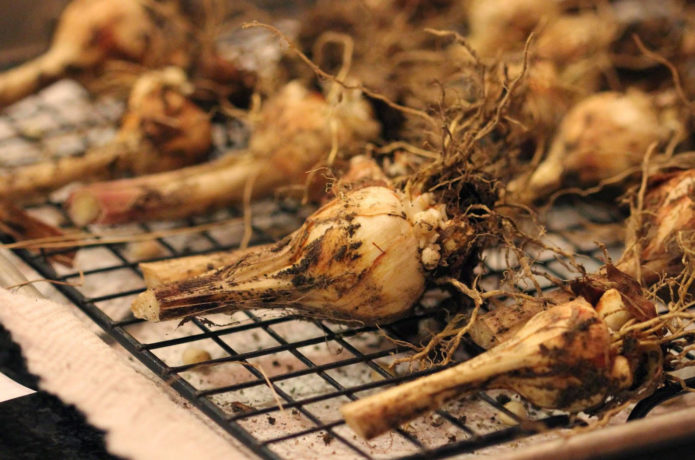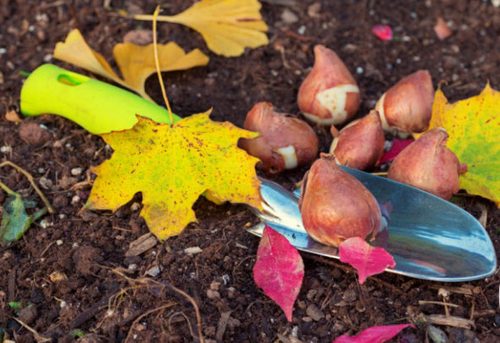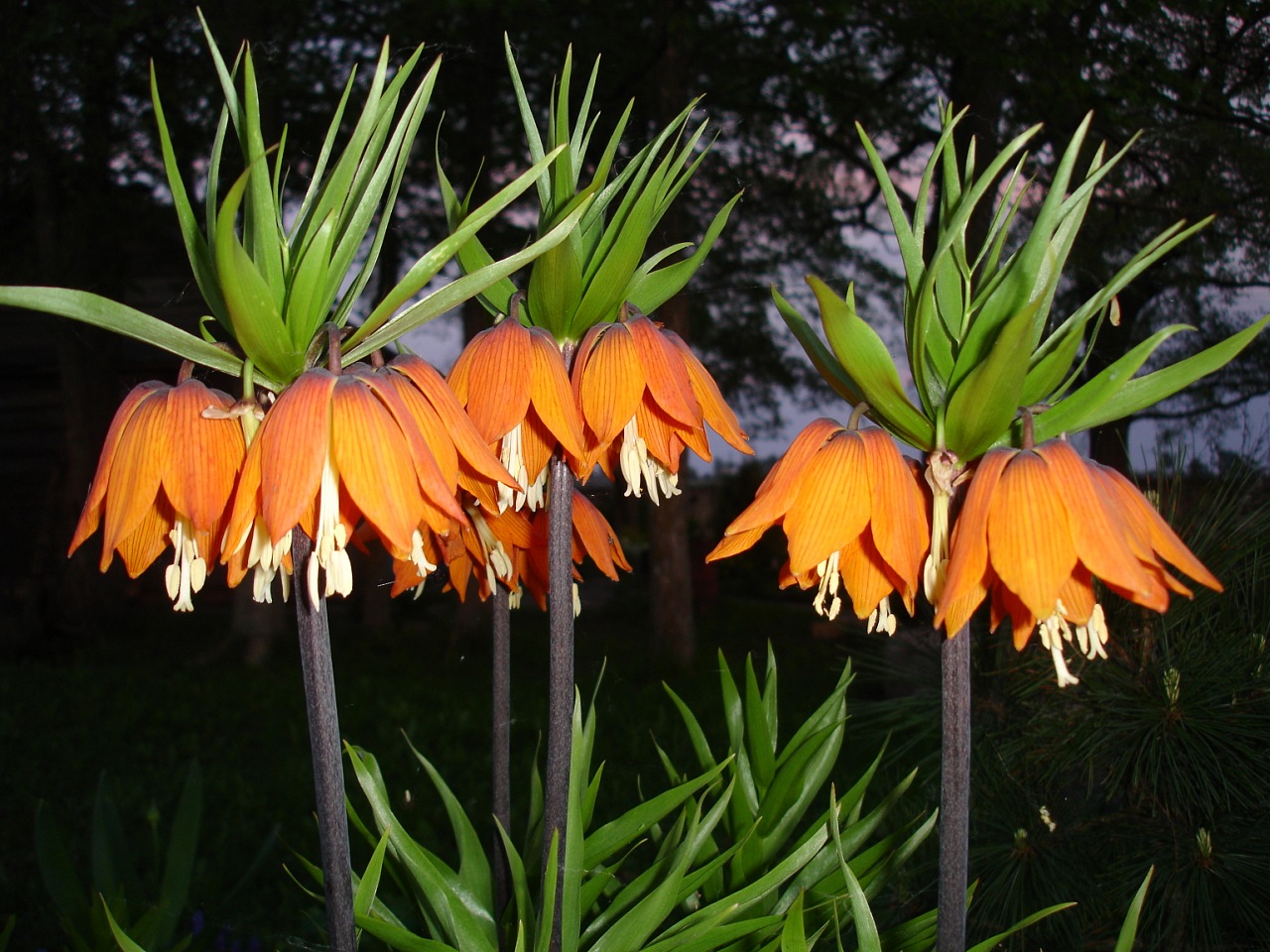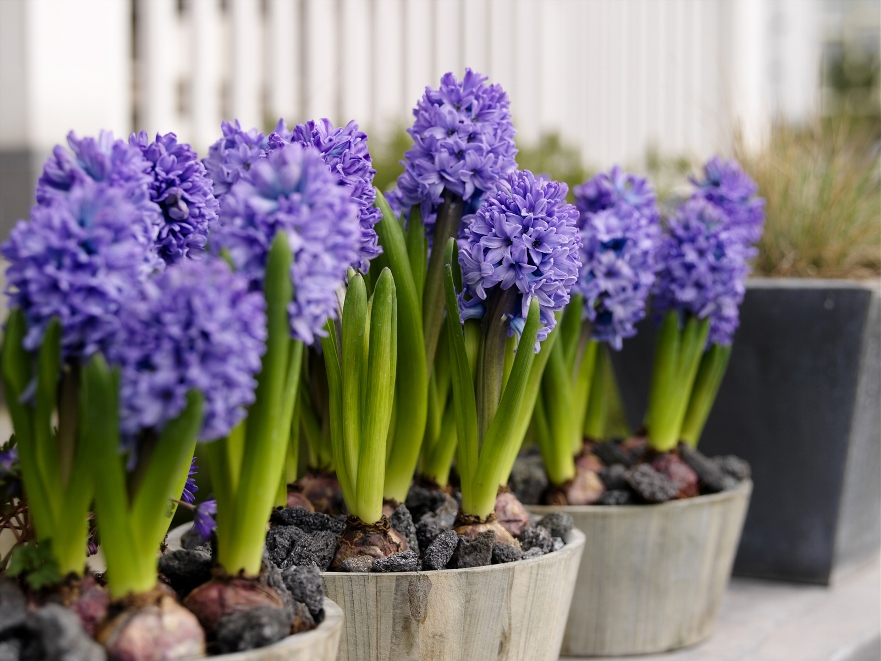In the gardens and apartments of Russians, you can increasingly see the exotic plant babiana. It belongs to the iris family and is distinguished by its rare beauty, bright flowers - blue, purple, red, lilac. Like any tropical guest (his homeland is South Africa), the plant will feel more comfortable if you follow the agrotechnical nuances recommended for it.
Content
Features of growing a flower in our latitudes
The determining factor in choosing how best to grow a flower - in the open field or at home, is the climatic conditions of the region. In the southern regions, as a rule, the first option is chosen: average summer temperatures from +22 to +28 ° C ideally meet the needs of this heat-loving culture. Therefore, it is grown in flower beds, lawns. In regions where a decrease in temperature during the growing season to +15 ° C is a common phenomenon, it is preferable to consider the plant as an indoor plant, otherwise this culture stops growing and stops blooming.
For those who do not live in the hottest climate, but would like to decorate a summer cottage with a flower, you can grow it at home, in a container or pot, and in the summer take it directly into a container outside and use it, for example, in the design of alpine slides. The plant tolerates such a move well - fresh air is useful for it for growth and flowering. For the same reason, experts recommend decorating balconies and open verandas with this culture. But you need to place the plant so that it suffers as little as possible from drafts.
Benefits of annual and perennial varieties
The flower is a perennial crop, but the associated benefits can only be appreciated by gardeners and summer residents of the southern regions of the country. Having once planted this plant in open ground, they can observe how from year to year it becomes more and more beautiful, without spending every new season of energy and time on laborious planting.
Perennials are more troublesome for flower growers from other regions. At the end of each season, the bulbs must be dug out to prevent them from freezing in winter, and then stored carefully until the next planting.
For Russian gardeners, this is not a serious obstacle - more familiar perennials, gladioli, have been successfully grown in our country in a similar way for decades.
Fans of annuals - plants whose full development cycle occurs in one season, can use a simplified cultivation option - without a dormant stage.It consists in the fact that the bulbs are driven out to obtain only one flowering, and then discarded.
Popular types with photos and descriptions
Russian flower growers who would like to grow crops in the garden or on the windowsill have a fairly large selection. It can be of several types:
- Direct (babiana stricta) — the height of the plant is from 15 to 30 cm, the leaves are the same in shape as that of the gladiolus. Brushes containing 5 or more flowers are red, purple, pink in color.
- Folded - average stem height - 20 cm. Large monochromatic or spotted flowers are similar in shape to peaks, their aroma resembles a carnation.
- Protruding - compared to straight and folded, it gives the impression of a "cute mess" - the inflorescences are branched, the leaves are covered with hairs. Cupped flowers can be white, lilac, cream, blue, purple.
- Red-blue has a color peculiarity - a transition from the lilac color of the main part of the petal to bright red in the central part of the bud. Interestingly, the crimson "zone" becomes wider as the flower begins to wilt. The leaves are corrugated.
Reproduction methods
Propagate a tropical culture by seeds (usually through seedlings, and not by sowing in open ground). A vegetative method is also possible, using small bulbs that form in each plant towards the end of the season.
Growing seedlings is a slow process. In order for it to be ready for planting at the end of May, the seeds must be sown in March. Here's how it's done:
- Before planting, seeds pass within 1 month. stratification. It is convenient to do this in the vegetable compartment in the refrigerator, where the temperature does not exceed +8 ° C and there is no lighting. The planting material is placed in wet gauze.
- The seeds are soaked in Kornevin's solution or some other growth stimulant.
- Fill the prepared container with nutritious and light soil. Sour and heavy soil cannot be used.
- The seeds are buried in the soil by 2-3 mm.
- Containers with seedlings are placed in a warm, well-lit place. Watering should be regular to provide the plants with increased moisture.
Ready seedlings can be planted in the ground if it (and the air too) are well warmed up.
Bulb propagation is a more popular method among gardeners. It is as follows:
- Prepare a site for planting. The earth is loosened, and then watered by adding potassium permanganate to the water - this will protect future plants from fungus.
- Under the bulbs, depressions of 5–7 cm are made at a distance of 10 cm from one another.
- Landing is carried out at an air temperature not lower than + 20 ... + 22 ° C, in clear, calm weather.
- The planted bulbs are lightly sprinkled with soil, watered.
Care in the garden from the moment of planting in the open ground until autumn
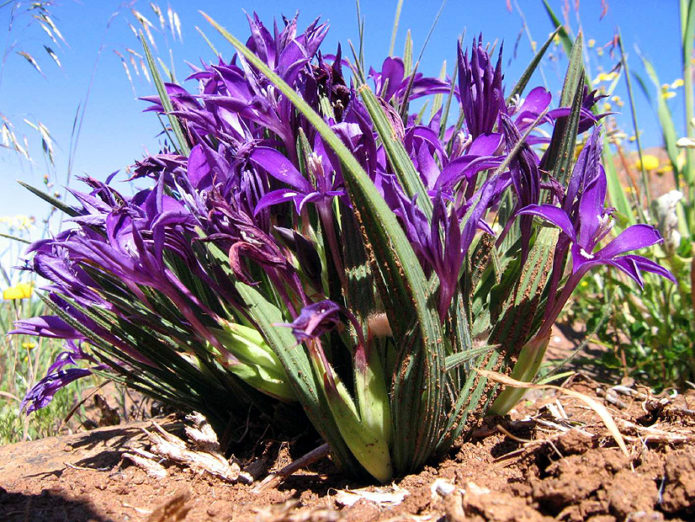
By shifting planting dates and adjusting the phases of plant development, you can achieve an earlier or later flowering
Plant care consists in watering, weeding, feeding. It is advisable for a flower grower to use potash-phosphorus fertilizers and follow this schedule:
- The first feeding - after 0.5 months. after planting the bulbs.
- The second is during the formation of peduncles.
- The third is during the flowering period.
- Final - 0.5 months. before digging up the bulbs.
Watering should be done very competently: the flower does not tolerate drought, but excess moisture can cause rotting of the stems and bulbs. Experts recommend mulching plantings with peat. This will allow even small amounts of moisture to remain in the soil for longer, providing the plant with water without interruption.
How to care during growth and flowering
Watering during flowering should be done daily. The flower reacts to the slightest drying out of the soil with the loss of decorative qualities - the number of buds and their size become significantly smaller. In hot weather, plantings can be sprayed.
In dressing, the emphasis is on potassium and phosphorus; in small quantities, the plant requires nitrogen and magnesium. Fertilization with a solution of bird droppings or other organic matter is effective.
When and how to collect seeds, prepare the plant for winter
The collection of planting material can begin when the globular capsules and the stem on which they are located become dry. They do it like this:
- The part of the plant, which contains the seeds, is wrapped in a piece of gauze and cut off.
- The contents of the box are poured onto paper, dried.
- Store seeds in a dry place at moderate temperatures.
And here's how to prepare a plant for winter:
- All leaves and wilted flowers are removed, this allows the crop to consume nutrients from the soil exclusively for bulb growth.
- During this period, watering continues, but in smaller volumes than before.
- Before the onset of frost, the bulbs are removed from the ground. This is done very carefully, since damaged specimens cannot be stored and should be discarded, since they are a suitable environment for the development of various infections. Many experts consider it necessary to protect healthy, whole bulbs from this scourge and recommend treating them with fungicides before sending them for storage.
- The planting material is dried and packed in paper bags. You can put it in boxes with dry peat.
In the southern regions, the bulbs are left in the open field for the cold season. For the wintering to be successful, they are sprinkled with peat, sand or a 20-centimeter layer of leaves. In areas with colder climates, the bulbs can also be left in the ground, covering the plantings with spruce branches and controlling the amount of snow in the flower bed - the plant will protect a 40-centimeter or more massive layer. In the spring, the cover is removed to prevent fading.
With container plantings, they do this - they are transferred from the garden to a cool place for the winter.
Solution of problems
An attentive florist will immediately notice that his green pet has problems, and will try to solve them:
- The plant does not bloom, it does not even form peduncles. The reason is an unsuccessful landing site (for example, poorly lit). The way out is to place the flower more competently in the future, and if it is in the container, choose another place for it. Sometimes the plant does not bloom due to strong winds, in this case, the situation can be corrected by planting taller crops as protection.
- The leaves turn yellow. The reasons are lack of water or burns from direct sunlight. The solution to the problem is to provide the plant with sufficient water, create an artificial shade for it, especially in the heat.
- Roots, bulbs rot. The reason is waterlogging. If the culprit of what is happening is groundwater close to the surface, the place of future plantings will have to be changed. If the irrigation was too abundant, then it is necessary to reduce their amount and the amount of water used.
- The flower withers. A possible reason is the defeat of the plant by gladiolus thrips, which feeds on its juices. Method of struggle - spraying all parts of the flower with Decis solution.
- Spots and cobwebs appear on the leaves. This is how pests manifest themselves - aphids and spider mites. Helping the plant - treatment with insecticides (for example, "Aktara").
Caring for a babiana that grows at home on a windowsill
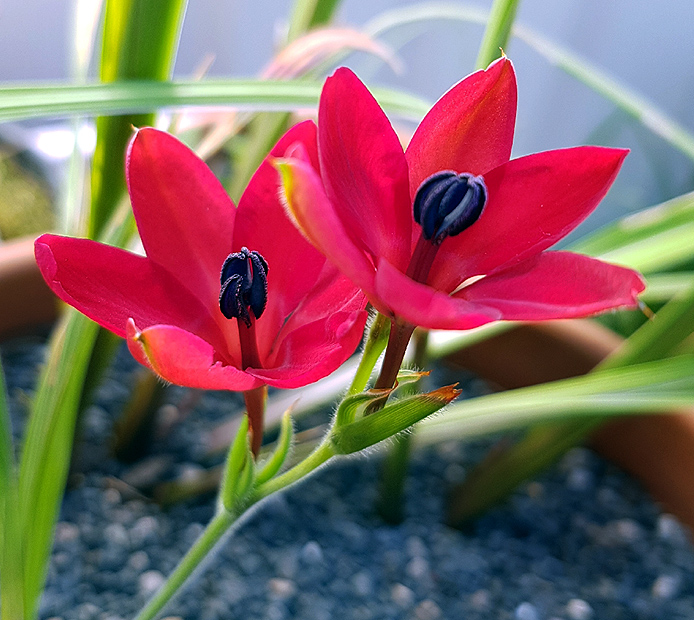
The requirements for agricultural technology differ significantly when the plant is in the phase of active growth and at rest.
The plant is grown in narrow (diameter - from 10 to 15 cm), but deep containers, in the lower part of which there must be a drainage layer.Soil is a universal soil mixture intended for indoor flower crops. You can add a little sand to it to make it more breathable and moisture-absorbing, or a perlite loosening additive. 4-5 bulbs are planted in each pot.
As an early-distilled plant, babiana allows its owner to regulate the timing of flowering. If, for example, a bulb is planted in December, then the appearance of buds will begin in early spring and last a month or a little longer. Then the leaves will dry out, and the plant will need rest - 3-4 months of rest. After that, you will need a transplant into a container with new, fertile soil.
Table: Required conditions of detention depending on the season
| Phase | Active growth | Rest stage |
| Lighting | The light is bright, but diffused (supplementary lighting if necessary), protection from midday rays | Lack of bright lighting |
| Watering | Abundant, providing constant soil moisture | At the beginning of the stage - reduction to a minimum, then - complete cessation |
| Humidity | 50% or more (use home moisturizers) | Dry air |
| Temperature | 20 to 28 ° C, ventilation, draft-proof | About +10 ° C |
Features of watering, feeding, formation
Top dressing is necessary for an exotic plant during the active growth phase; they are carried out at intervals of 3-4 weeks. Fertilizers should include potassium and phosphorus. Ready-made mixtures for flowering plants that are sold in specialized stores meet these requirements. Organic fertilizing is carried out once a season.
Watering is one of the main activities for plant care. They should be so abundant that the soil in the pot never dries out completely, but only the topmost layer is dried.
If the drainage is done well, the pot with the plant is simply immersed in water so that it takes as much moisture as it needs to grow.
The formation of a plant consists in the removal of dried peduncles and leaves. They are constantly being replaced by new ones - throughout the growing season, the culture is actively increasing young greens. Dry leaves must not be plucked; they must be carefully cut off with a sharp knife.
Caring for the culture is quite simple if we correlate it with the vivid effect that an exotic plant produces in flower beds, alpine hills and rockeries of Russian amateur flower growers. For those who are not sure that they will be able to cope with a tropical guest, you can first grow a flower at home - this will allow you to better know the features of the culture, its requirements for agricultural technology.
